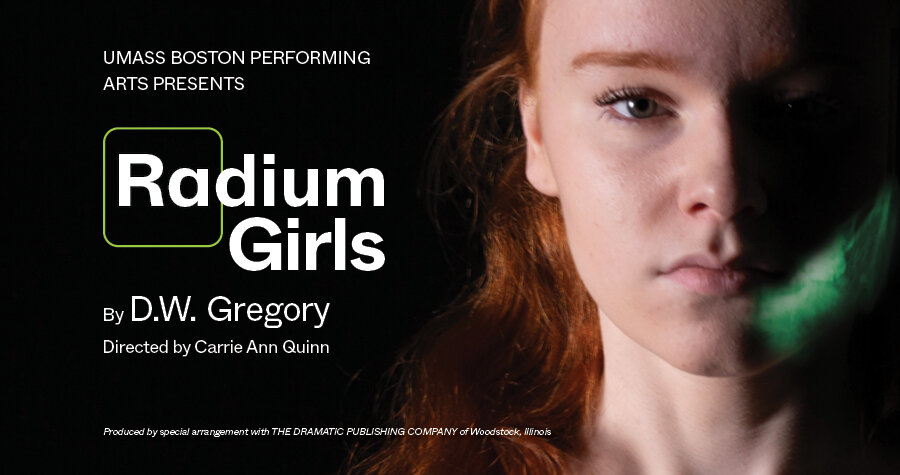The UMass Boston Performing Arts Department brings “Radium Girls” to the stage in University Hall. “Radium Girls” is based on the true story of women who worked in a dial factory, painting radium paint on the faces of the clocks to make them glow. These clocks were then utilized in combat so soldiers could read the dials in the dark.
The women painted each clock face by dipping the brush in the radioactive paint, licking the brush to sharpen it, and then painting the face with the brush. Consuming radium can have horrid effects, including jaw bone decay and later death, as shown in the play. After the women of the factory began experiencing symptoms of radium poisoning, they sued the U.S. Radium Factory for poisoning them under the guise of supporting their troops.
The show stars Grace Fryer, played by UMass Boston student Anna Pumphrey, and her journey from working in the radium factory, to her case against the factory, to her tragic death caused by radium poisoning.
Pumphrey’s portrayal of Grace was nothing short of raw talent. Her interactions with her mother, played by Jes Boyajian, her boss, played by Michael Ferrari, and her coworkers, played by Nakatto Daison Nassozi and Sierra Simone Wilcox, all portray the hardships and tribulations of being a woman in the 1920s.
She was ignored, manipulated and lied to by every man working above her. Her eventual breakdown because of this brings light to how women were treated in war efforts. Her and her coworkers’ contributions to the war effort were undermined by everyone around them. They gave their lives unknowingly and nonconsensually for the cause.
Michael Ferrari, playing Arthur Roeder, president of the U.S. Radium Factory, highlighted the workplace culture and toxicity in his role. The manipulation of his female workers was evident. His role called attention to the extent capitalists will go to make a profit, even if it means killing their workers with their deadly materials.
Kathryn, played by Nakatto Daison Nassozi, also worked at the factory. Kathryn’s storyline was devastating and Nassozi portrayed it perfectly. From her energy and livelihood at the beginning to her untimely death near the end, Nassozi was a driving force in the production.
The set and production of the show were simple yet well-executed. The set consists of two floors connected by a single staircase. The windows in the back bring the viewer into the 1920s factory environment. The set was splattered in glowing paint that began showing when the cast discovered that the paint was radioactive. A clock ticks between scenes, counting down the minutes until the Radium Girls’ deaths.
The show is directed by UMass Boston professor Carrie Ann Quinn. Quinn says, “This production is dedicated to each of the dial painters—thousands of girls and women—who lost their lives while working jobs to save the lives of ‘our boys over there.’ May they never be forgotten.”
“Radium Girls” is running from April 9 to April 12. Tickets are available on the UMass Boston ticketing website, umb.universitytickets.com.





















































